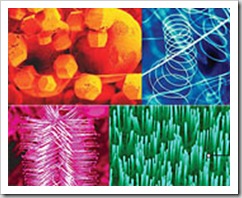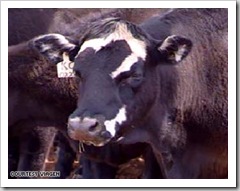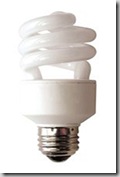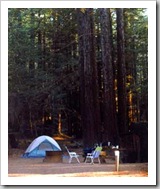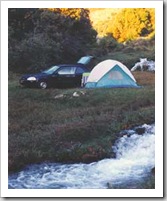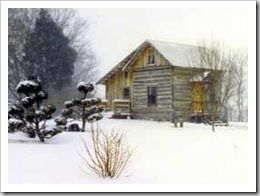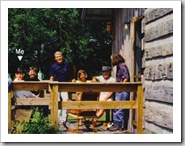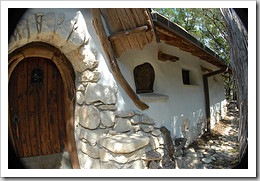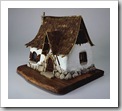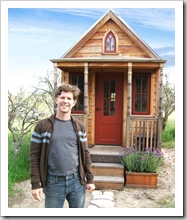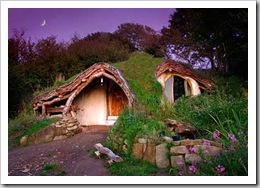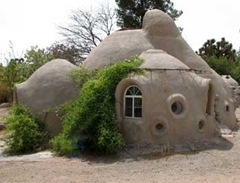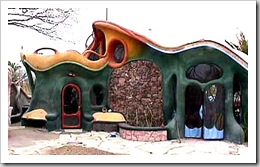I've been finding a lot of interesting developments with regard to food lately. So thought I'd share them with you...
Something new is being added to our table and life called Nano-foods or nano-tech products. What in heavens name is Nano-food?
The internet is buzzing with a lot of stories. Reuters (2008, July 30) Nano-foods: The next consumer scare? In essence Nano-foods are produced by using nano-technology, which involves design and manipulation of the molecular level. Companies utilizing nanotechnology claim it can enhance flavor or nutritional effectiveness.
The Observer Welcome to the world of nano foods. Claims the food industry is developing a colorless, tasteless programmable nano-drink that you zap in a microwave which has been encoded with your eating preferences.
Sounds like sci-fi... Star Trek's Captain Picard ordering 'Tea, Earl Grey, hot' and it materializes in the replicater. That's an interesting concept. But I wonder about eating what appears to be synthetic food. What about the food's vitality?
Are there food products that currently contain nano-technology?
Out of the Labratory and onto our plate. (2008, March) A detailed report on Nano-tech products in agriculture and food funded by Friends of Earth. List of food products currently containing nano-products include: Canola Active Oil (Shemen), Nanotea (Shenzen Become Industry & Trading Co.), Fortified Fruit Juice (High Vive.com), Nanoceuticals Slim Shake (assorted flavors, RBC Lifesciences), NanoSlim beverage(NanoSlim), Oat Nutritional Drink (assorted flavors, Toddler Health), and 'Daily Vitamin Boost' fortified fruit juice (Jamba Juice Hawaii).
Do we know if there are risks consuming nano-foods or the potential toxic effects to the body?
Science Daily ETH Zurich/Swiss Federal Institute of Technology (2008, July 22). Nano-modified Food: How Much Are Consumers Willing To Accept The Associated Risks?. Reports, "Nanoparticles, however, are considered as highly reactive and it is not yet clear whether under certain conditions they can get the better of protective mechanisms and have a toxic impact on the body." Consumer Reports (2007, July) Nanotechnology Untold promise, unknown risk. Reports, "A growing number of scientists say the unique properties of nanomaterials might pose substantial risks, which are largely unexplored, to both human health and the environment."
Besides food there are a lot of products containing Nano-tech over 600 and growing. NanoForum offers an interesting report called Nanotechnology in Consumer Products (2006, October 25) which contains a list of products. As well Madison's Nano Cafe is a great resource for news and articles about nanotechnology.
I like to make informed decisions about everything in my life. So I'm all for labels disclosing complete information.
Wired (2007, December 19) Senate Votes to Keep Cloned Meat Out of Your Burger, for Now. The Senate passed a Farm Bill measure intended to bar the FDA from approving meat and milk from cloned animals until further study was conducted. Center for Food Safety (2008, January 17) Press Release. EUROPEAN UNION GROUP ISSUES OPINION CALLING CLONING FOR FOODS ETHICALLY UNJUSTIFIED. Center for Food Safety Praises Opinion; Calls for Swift Passage of Farm Bill Mandating Examination of Economic Risks to US Agriculture.
Public Opinion Center for Food Safety Reports, "Recent opinion polls show the majority of Americans do not want milk or meat from cloned animals in their food. A national survey conducted this year by Consumers Union found that 89 percent of Americans want to see cloned foods labeled, while 69 percent said that they have concerns about cloned meat and dairy products in the food supply. A recent Gallup Poll reported that more than 60 percent of Americans believe that it is immoral to clone animals, while the Pew Initiative on Food and Biotechnology found that a similar percentage say that, despite FDA approval, they won't buy milk from cloned animals."
CNN (2008, January 18) FDA OKs meat and milk from most cloned animals. When introduced there will be no labeling required. The FDA asserts that there is no material difference between cloned and conventionally grown animals.
What's up with the swift approval by the FDA? If cloned animal products ever hit the grocery shelves I'd sure like to know so I can make informed purchasing decisions.
Called old news. The newest hot topic is nano-tech, but they haven't gone away. FDA tells us both are ok. Their endorsement means companies aren't required to put this info on packaging. Since around 1996 about 70% of our processed foods have contained GMOs. I'd like to know by reading the packaging instead of having to do an extensive online search. My body has an adverse reaction to both of these technologies so I cannot eat them.
Public Opinion A CBS/New York Times poll done recently found that 53 percent of Americans wouldn't buy genetically modified foods.
If you're interested here's a list of products which contain GMOs. The photo above is an ad from Do You Know What You Eat?Greenpeace's advertising campaign against Genetically Modified Organisms. What a superbly done and wonderfully creative campaign. Kudos to BBDO Russia.
Organic vs. conventional food study underway some findings released. Green MSN (2007, November) and BBC News (2007, October) reported - a Newcastle University study shows organic foods have far more nutritional value. They found levels of antioxidants in milk from organic cattle were between 50% and 80% higher than normal milk. Organic wheat, tomatoes, potatoes, cabbage, onions and lettuce had between 20% and 40% more nutrients.
Is this just the beginning of lots of comparable studies? To my taste buds naturally grown food (buzz word organic) has a fuller, richer flavor... like homegrown tomatoes vs. store bought. Studies proving what my mouth distinguished at first bite. Exciting! Tastes better and fresh organic food is better for you too! Yahoo!!!
Now if we could only get those crazy prices down...
P.S. I've been eating locally grown and organic produce all summer and I started walking. Really strange. I haven't desired to walk in years. But now most mornings I walk to the Post Office and evenings around the neighborhood; about 2 miles total. I have more vitality and feel better too. Don't know for sure if it's related, but it's sure interesting.
Here are a couple of links you may enjoy:
Food Routes - A resource on locally grown foods. Why to buy and where to buy.
Organic Made Easy - A guide to understanding and buying organic produce on a budget.
The Practical Guide to Healthier Living - Lots of videos and articles about natural healthy living. Why to buy at Farmer's Markets, recipes and more.
